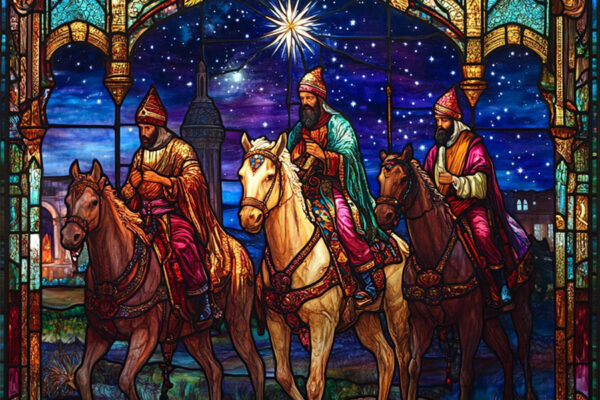Our Neighbors’ Joy

This evening is the beginning of the Jewish festival of Purim (POOR-um); well, it is if you are reading this on the day it appears in the St. Paul e-news (Feb. 25, 2021). Our Jewish neighbors will be undertaking a long-standing and meaningful observance. The festival recalls an event that is part of our Bible, as well as the Jewish Bible: the rescue of her people by Queen Esther and her Uncle Mordecai when they were threatened with genocidal violence.
The core of the observance will be the reading of the entire “scroll of Esther” – the whole biblical book. At ten chapters and just under 5,000 words, it is not particularly long. The public reading will take only about a half-hour. It is a story of deception and reversals, nearly farcical in its development. Characters in the story, one after another, hide their identity, disguise their motives, and are outwitted at their own games. Fittingly, the community will come to the reading dressed in costumes and disguises, usually representing something that is the opposite of who they are – doctors dressed up as germs, lawyers as convicts, children as grown-ups, and vice versa. As with “Carnival” in the Christian tradition before Lent begins, so in Purim – the absurd and grotesque comes to life for a brief time.
The festivity and abandon of the celebration stand in stark contrast to the gruesomeness of the story. Esther’s predecessor as queen is murdered for saying “no” to the king; girls across the realm are rounded up to be “auditioned” by the king as his next wife; the villain lays plans to exterminate a whole people so that one Jew who annoys him can be disposed of; the villain is hanged from the gallows he built for that Jew; his ten sons and all who plotted with them end up dead, as well. Read as plain history or a serious tale, the scroll is offensive, outrageous, profoundly troubling. The raucous celebration that accompanies it would be obscene.
For those raised in the tradition, though, this is not the case. The tradition says that the celebration must be so extreme that the revelers no longer know the difference between blessing the hero and cursing the villain. It almost literally calls for a kind of blind abandon in which all human assessments of morality dissolve. The crescendo of absurdity in the story is meant to raise the community to a place where the only thing left in their awareness is the outcome: that God is the God of the greatest reversal. With God, and only with God, absurdity itself can be overturned and life’s most inexplicable mysteries can be taken up into God’s will for us. In such a state, we no longer try to explain tragedy, but in the midst of it, we cling to God as the one who can give it meaning and raise us up to a life beyond it.
The story of Esther beckons us to confront the reality of suffering and evil that threatens to overwhelm us in life and in the world. It invites us to approach that terrible reality with faith and confidence that we are held in arms stronger than our own, with a wisdom wiser than we know, by a promise rooted in the One who is Lord of heaven and earth and history. In that faith, on this night, our neighbors’ joy can be ours, as well.





Val Waring
Not unlike today, in some of these stories it’s hard to tell the good guys from the bad guys. Thanks for putting it in perspective.
Paul Caldwell
Thank you Pastor Pettit.